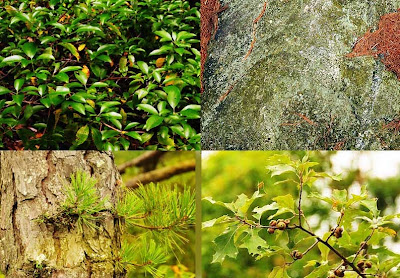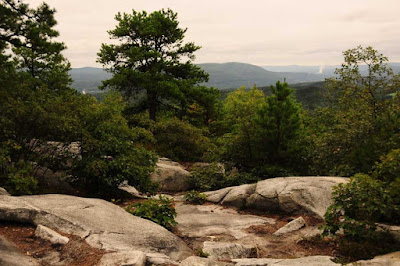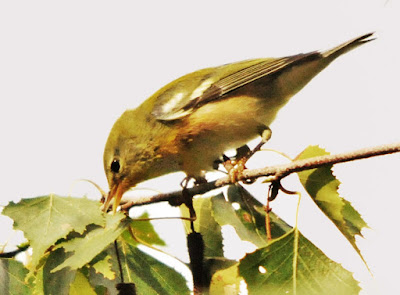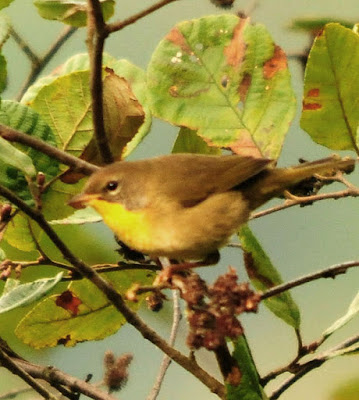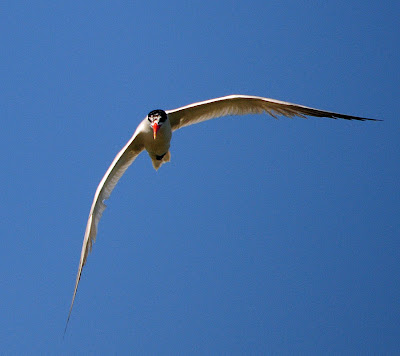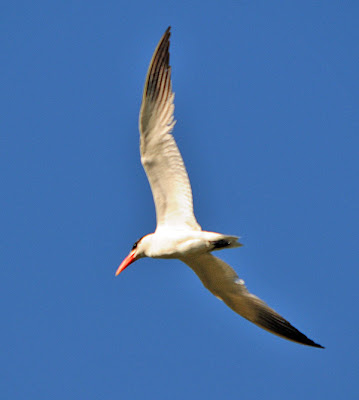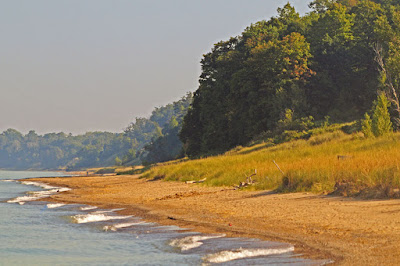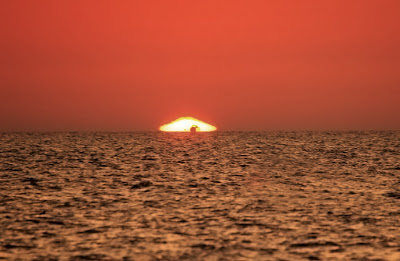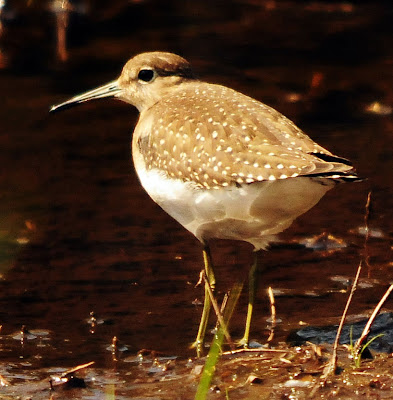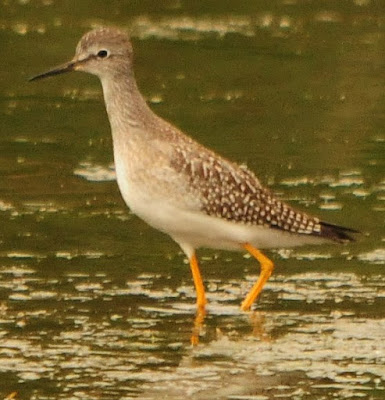
Eastern Phoebes were fluttering up from their perches, making a sweep close to the ground and over the bushes and settling down again.

Yellow-rumped "Myrtle" Warblers were flitting in and out of view.

High up on a bluff above the CT River I saw a tree that seemed to have been cut by a beaver just a day or so ago. Fresh white wood chips lying around the base but there was no stream or pond anywhere in the area, nor were there any other signs of beaver activity in the area. The tree was close to the edge about 30 ft above the river. Looking down I stood on an overhang: there was no way a beaver, or a dog for that matter, could climb to the top. So what the beaver was doing there will probably remain a mystery.

Every morning with breakfast I check the latest postings on the blogs that I follow and read the NY Times - the Tuesday issue is my favorite one since it has the weekly Science section. Today there was an article with the title Give Birds a Break, Lock Up the Cats It made me recall an website of birdsafe cat collars that I had saved in my Favorites folder, but never acted on: special fabric cat collars that will alert the birds to the presence of the cat. So I went ahead and ordered two collars for my neighbors cats that are stalking my feeders. I am not sure yet how to present the collars when they come in the mail - I'll have to be diplomatic though. It helps that the neighbors are our friends.
12/4/09 Mystery solved: I found many more trees cut down or worked on by a beaver, both small and very large trees, when I hiked up to the Hinsdale Bluff today. I also found the lodge:
This is the beaver lodge in the CT River, down a very steep slope. The beaver slide starts between the two trees in the foreground. It's a wonder how the animal made it up this almost vertical slope.






















